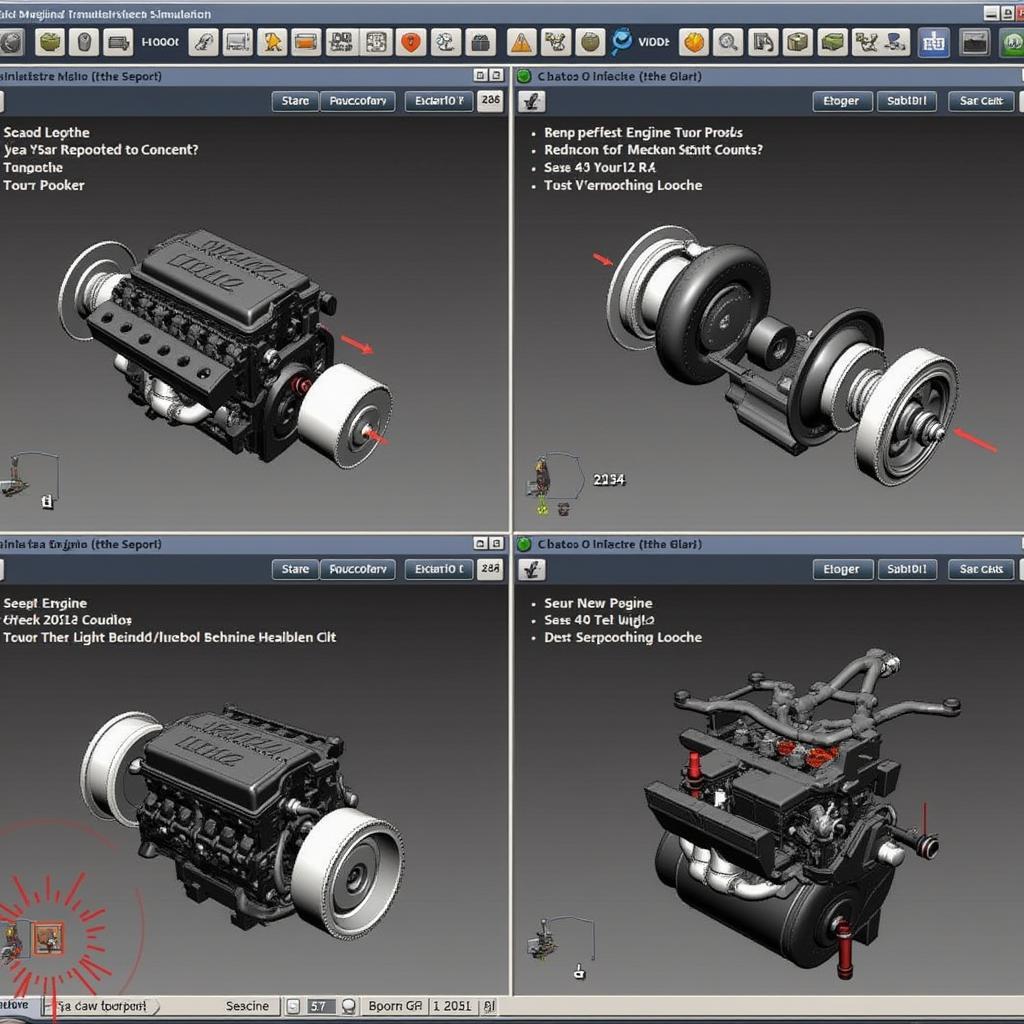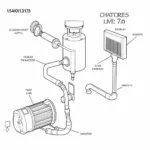Car Mechanic Simulator 2015 offers a deep dive into the world of car repair, and mastering engine repair is key to success. Whether you’re a seasoned virtual mechanic or just starting out, knowing how to tackle those intricate engine parts can be the difference between a roaring engine and a garage full of frustration. This guide will equip you with the knowledge and steps needed to diagnose and repair engine problems like a pro.
Understanding the Heart of the Matter: Engine Basics
Before you can repair an engine, you need to understand its basic components and how they work together. Car Mechanic Simulator 2015 provides a realistic simulation of a car’s engine, complete with:
- Engine Block: The foundation of the engine, housing the cylinders and crankshaft.
- Cylinder Head: The “lid” of the engine block, containing the valves and combustion chambers.
- Pistons: Moving components within the cylinders, transferring combustion energy to the crankshaft.
- Crankshaft: Converts the reciprocating motion of the pistons into rotational force, powering the wheels.
- Valvetrain: Controls the intake and exhaust of gases within the cylinders.
Familiarizing yourself with these parts and their functions within the game is essential to effective engine repair.
Diagnosis: The First Step to Successful Repair
Just like in a real-life garage, correctly identifying the problem is half the battle. Car Mechanic Simulator 2015 provides you with tools to help you diagnose engine issues:
- Customer Description: Pay close attention to the customer’s description of the problem. This will give you valuable clues about where to start your inspection.
- Test Drive: Take the car for a spin to experience the issue firsthand. Listen for any unusual noises, feel for vibrations, and note any performance issues.
- Examination Mode: Utilize the examination mode to get a closer look at the engine. Check for visual cues like leaks, worn-out parts, or broken components.
Getting Your Hands Dirty: Repairing Engine Parts
Once you’ve identified the issue, it’s time to roll up your sleeves and get to work. Car Mechanic Simulator 2015 allows you to repair or replace a variety of engine parts:
- Pistons and Rings: Worn-out pistons and rings can lead to loss of compression and power. Replace them with new ones to restore engine performance.
- Valves and Springs: Damaged valves can disrupt the engine’s timing and cause misfires. Inspect and replace them as needed to ensure proper combustion.
- Timing Chain/Belt: The timing chain or belt synchronizes the movement of the crankshaft and camshaft. A broken timing chain/belt can cause catastrophic engine damage, so regular inspection and replacement are crucial.
- Gaskets and Seals: Leaky gaskets and seals can lead to fluid loss and engine damage. Always replace them when working on the engine to prevent future leaks.
Tips for Engine Repair Success
- Follow the Manual: Each car in Car Mechanic Simulator 2015 comes with a repair manual. Use it as your guide to ensure you are using the correct parts and procedures.
- Take Your Time: Engine repair is intricate work. Don’t rush the process. Take your time, double-check your work, and be patient.
- Upgrade Your Tools: As you progress through the game, invest in higher-quality tools. Better tools will allow you to work more efficiently and accurately.
Conclusion
Mastering engine repair in Car Mechanic Simulator 2015 takes practice and patience. By understanding the basics, utilizing your diagnostic tools, and following the steps outlined above, you’ll be well on your way to becoming a virtual engine repair expert. So, fire up your computer, head into the garage, and get those engines running smoothly!



